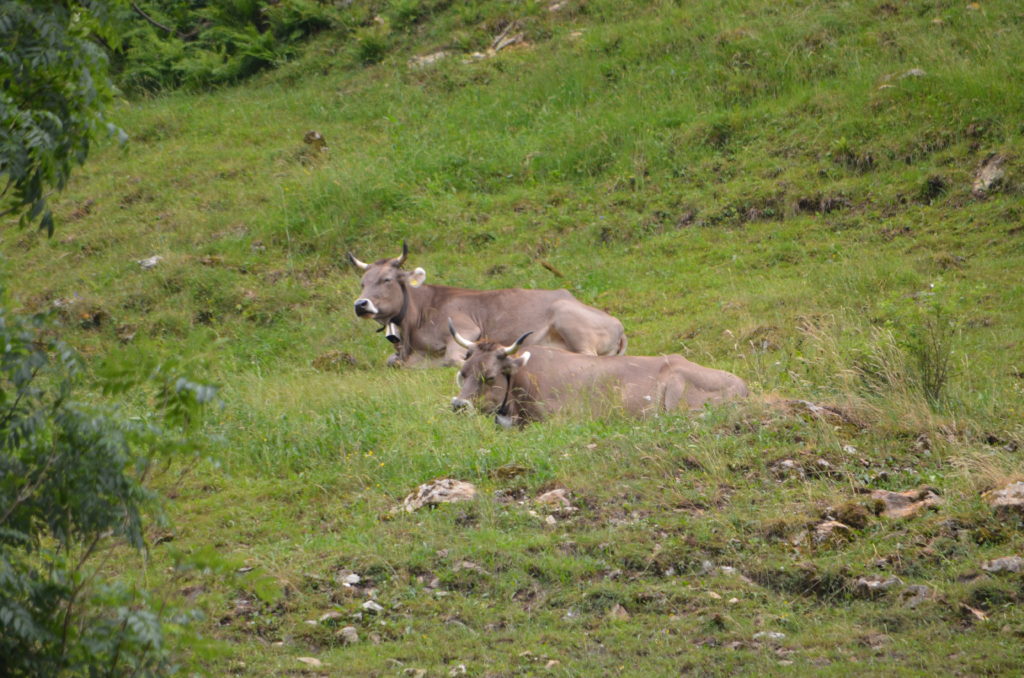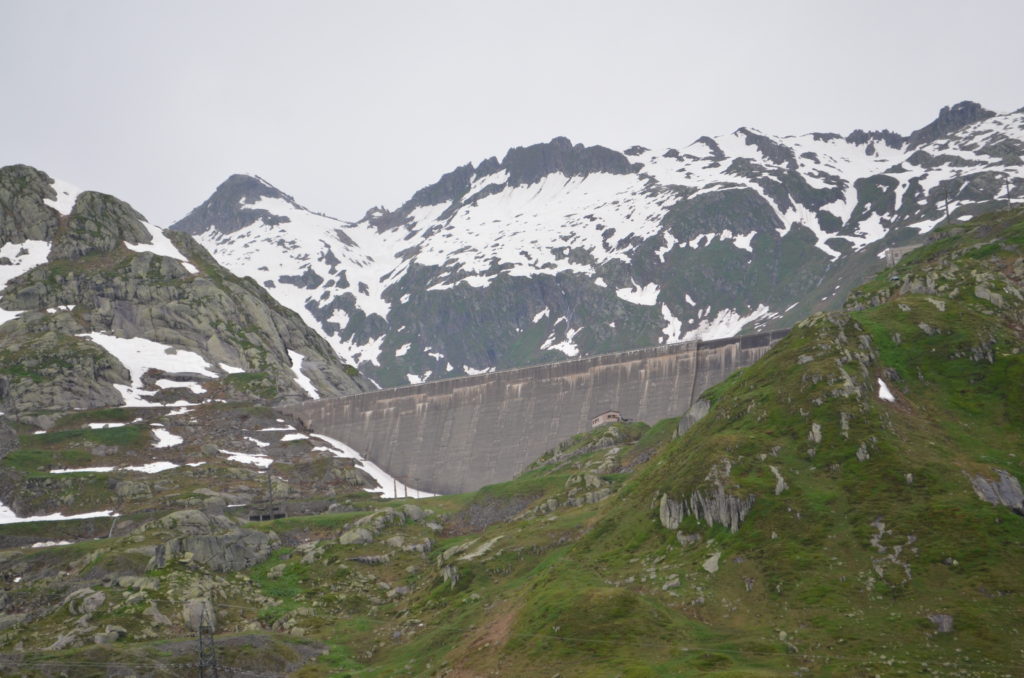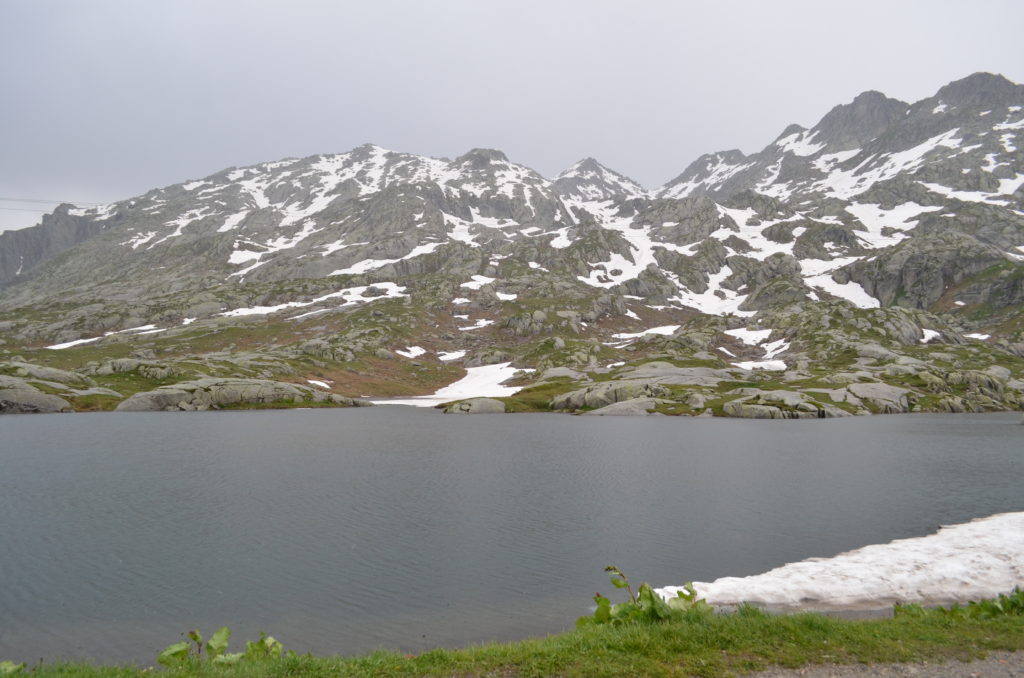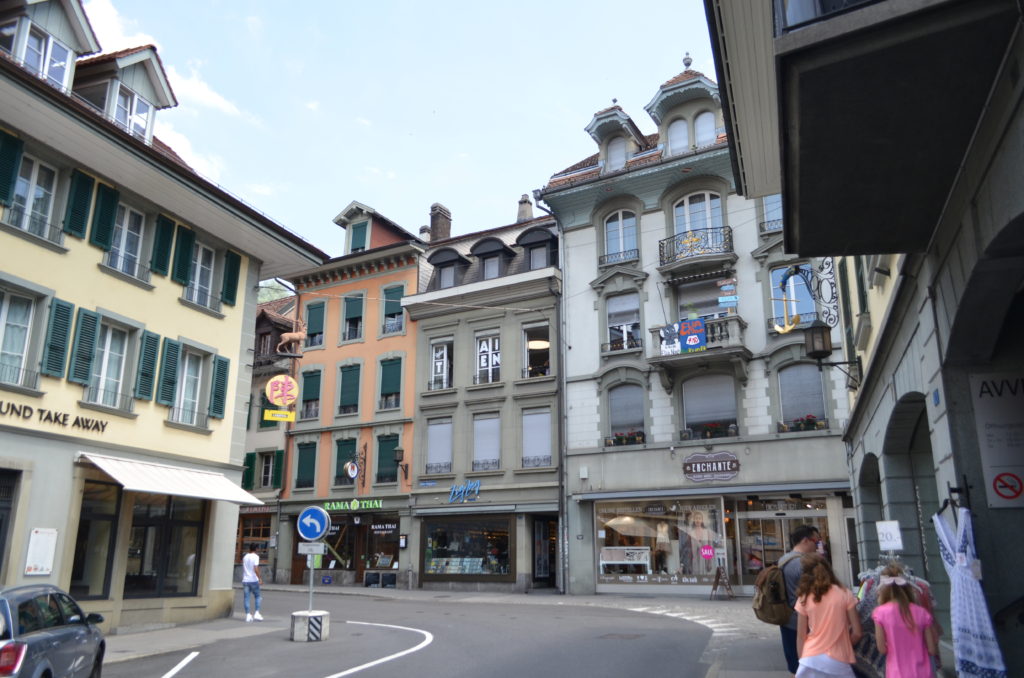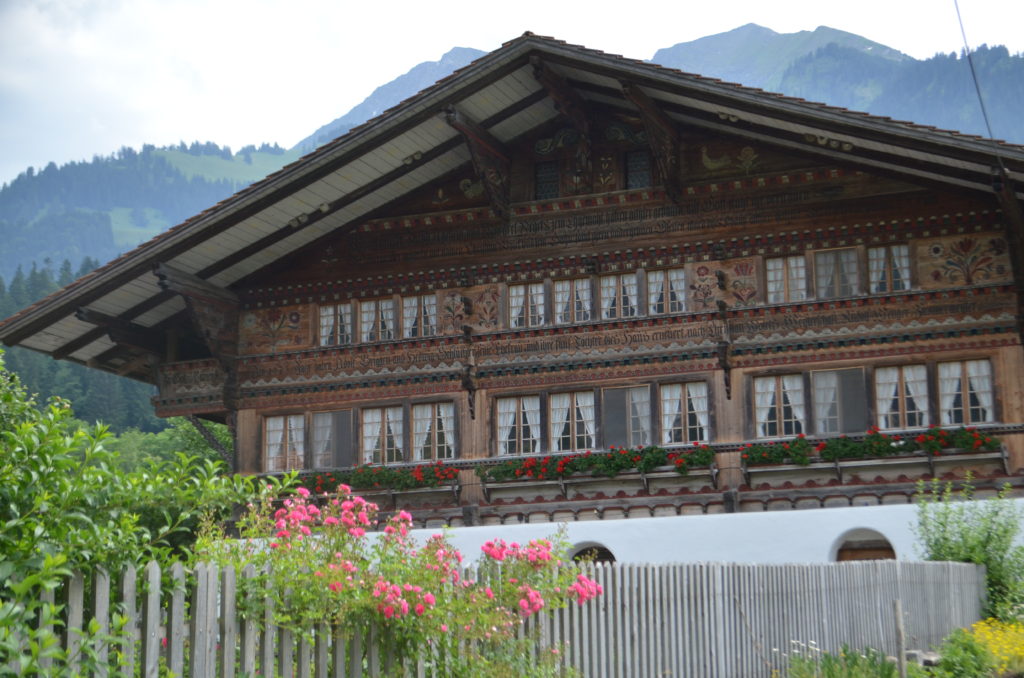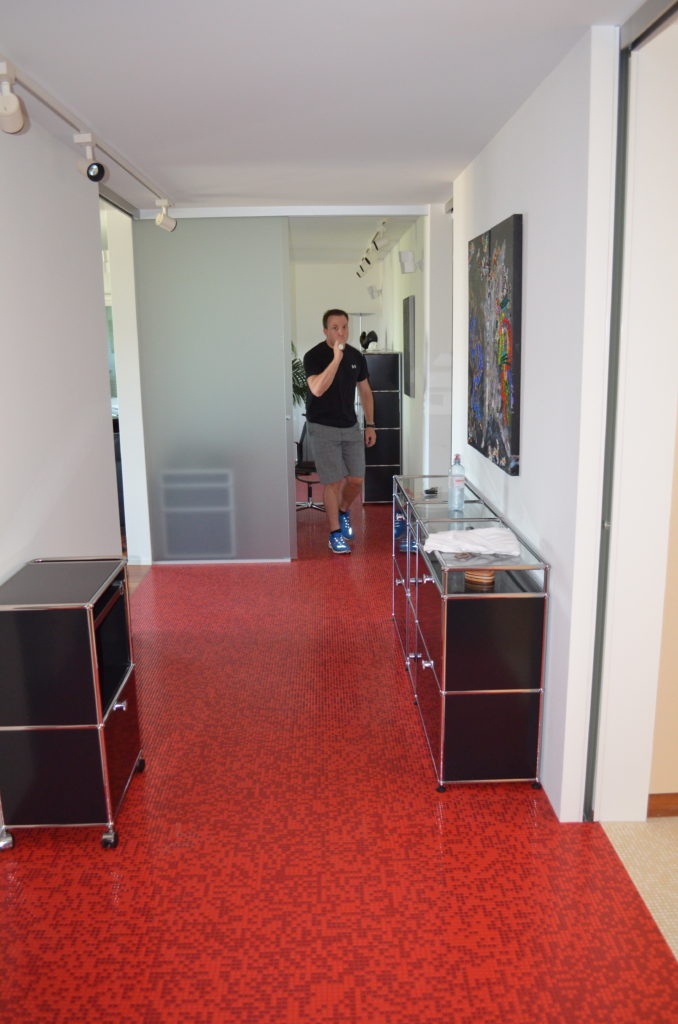Outrunning rainstorms, motorcyclists passing on a blind curve, uphill in the sleet and more craziness from the Alps
Leaving Thun behind us, we were no more than a mile or two outside the city, on the windy road alongside Lake Thun before we started seeing a handful, then groups, then dozens of street bikes zipping by us, coming from the mountains in the distances. We stopped at Lake Thun to take a few pictures, test the water and grab a bite to eat, but we were being chased by storm clouds. They were already brewing beyond Oey, and by now, we knew the routine. If we were lucky, we had two hours before we’d get dumped.
Two different views of Lake Thun as you head towards the Alp passes. Lakeside eating, swimming and skiing all set in the world’s perfect location.
Scenery admired, pictures taken and more bread, cheese and meats eaten, we got back on the road, heading towards the skyrocketing peaks of the Alps. Grass fields replaced apartments and homes, trees giving way to grey rocks which appeared soft from the road. The number of streams and waterfalls grew with the size of the mountains, and at first, I insisted we stop at every waterfall. After the fifth, I realized taking a photo of every water effect coming off the Alps was unsustainable, plus, it would probably be boring to you, the reader.
Never one to disparage a good water effect, but this was the seventh in about a five-mile stretch and I had to put an end to the madness that I knew would befall me when trying to pic “the perfect shot,” for the blog.
The glaciers and restaurants
By the time we reached the top of Furka, the mist had turned to rain, and anyone on two wheels instead of four were in trouble. Then came the hail. I was seriously disappointed because the glaciers were now half-cloaked in grey clouds and my camera was pelted as I took photos, but I wasn’t the only one.

The windy, narrow road of switchbacks, underpasses and overhangs has multiple turnouts for stopping and snapping, or as we found, resting. These hardy pedal-bikers who have the stamina to climb for hours paused, stretched then got right back on their bikes, ignoring rain and hail, soldering on. It was impressive to say the least.
Riding on two wheels instead of four is impressive in my book; hills and sleet are dangerous and not for the faint of heart.
For those wanting a warm drink, a half-dozen eateries dot the road, all with indoor and outdoor seating. Although the rain was coming down, it was still quite warm the entire time, all the way to Gotthard Pass, which would take another hour to reach.
Two different restaurants along the way to Furka Pass, but both enticing to the worn out and presumably weary riders. The bottom picture is a very bored looking woman in front of her chalet, which is located directly across from the restaurant in the upper right.
My favorite Swiss cows–so soft and fuzzy, lounging just a few miles below this dam.
As we reached the top of Furka, the rock formations changed yet again, then it was suddenly green as we began a descent to the high valley. Here, we took a thirty-minute break, darted inside the eatery, waiting for a break in the storm before heading down and out on a peninsula to take a family photo. The rain momentary stopped, we snapped in the high winds, Porsche started singing in front of the fields while I recorded her and then bam. The rain came thundering down and we were soaked by the time we completed the short run to the car.

Descending into the town of Wassen
Through the high valley we drove, enjoying the town of Wassen, it’s church in the center of town and the gelato. Although we wouldn’t reach the Italian border for another hour, Swiss-German had ceased to become the primary language, Italian was now dominant.
Very quiet at this time of year, save for a few hikers who were in the outer lying areas, presumably staying in the quaint hotels located in Wassen.
Gotthard ski resort
We’d expected beauty and grandeur, tunnels and turns, but not the development of the town of Gotthard, near the top of the pass but not quite. What used to be a few moderately sized buildings in what I’d describe as a punchbowl community, encircled by high peaks, is now a Whistler-style hotels, connected and imposing. While the two areas are being built around a courtyard, and not far from the gondola, it’s still disheartening to see the transformation of the area, but such is life and progress. The train goes right to the center of the development, and for the thousands of ski buffs making the pilgrimage, ourselves include, it’s nirvana for residents of two countries on either side; Lake Como or Thun, Bern and Lucerne.
White and craggly, the rock formations change with each pass.
Up and up again we drove, then suddenly, the sign for Gotthard Pass announced we’d arrived. Our car identified it was about 50 degrees but dropping below 30 with the wind and rain. I donned Roger’s coat, grabbed my iPhone and recorded a short video for Instagram.












